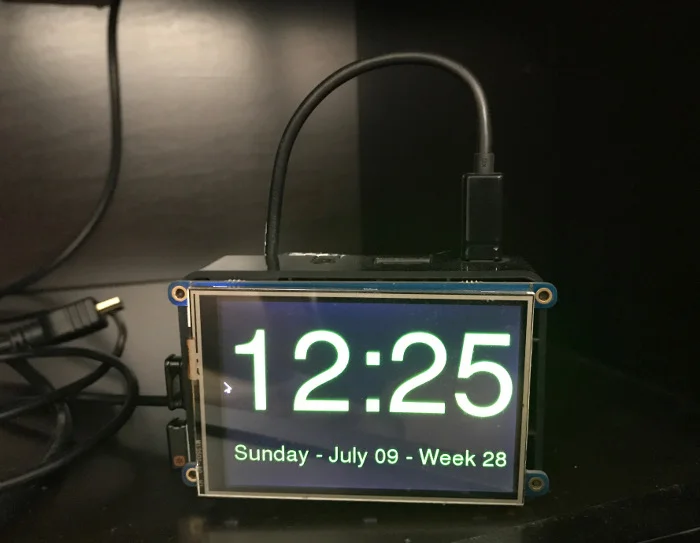
I’m a cord cutter—one of the many people who have canceled their expensive cable channel subscription and switched to cheaper, legal, alternative methods to get their TV entertainment. Just a few hours after I returned my cable set-top box, it became clear I had a gap to fill. The clock that was part of my cable box, sitting underneath my TV, was gone, and I never realized how much I used it until now!
Sure, I could have ordered a cheap clock from somewhere, but wouldn’t it be more fun to create my own using a Raspberry Pi? I thought so too! This endeavor was not necessarily about saving money; it was more about playing around with Linux and the Raspberry Pi to solve a little problem at home.
A couple of years ago, I created a portable streaming camera with a Raspberry Pi 2 and a touch screen LCD. I still had the hardware and wasn’t using it for anything, so I decided to repurpose it into a clock for my entertainment center.
I had another decision to make, first: What clock application should I use? Should I write my own? Or find something that’s already out there? Even though I am sure writing the app would have been pretty simple, I decided to use Clock Tab. The two main reasons I decided on Clock Tab were: 1) I could change its appearance on runtime, and 2) it was already done. I AM LAZY (sometimes)! But note that this choice requires continual connection to the internet.
Next, I had to figure out a way to get a browser to start up in kiosk mode so Clock Tab could take over the entire screen and look like a dedicated clock. After a little research, I decided to go with the mFull plugin for Firefox. (Note: the Raspbian/Debian version of Firefox is called Iceweasel).
